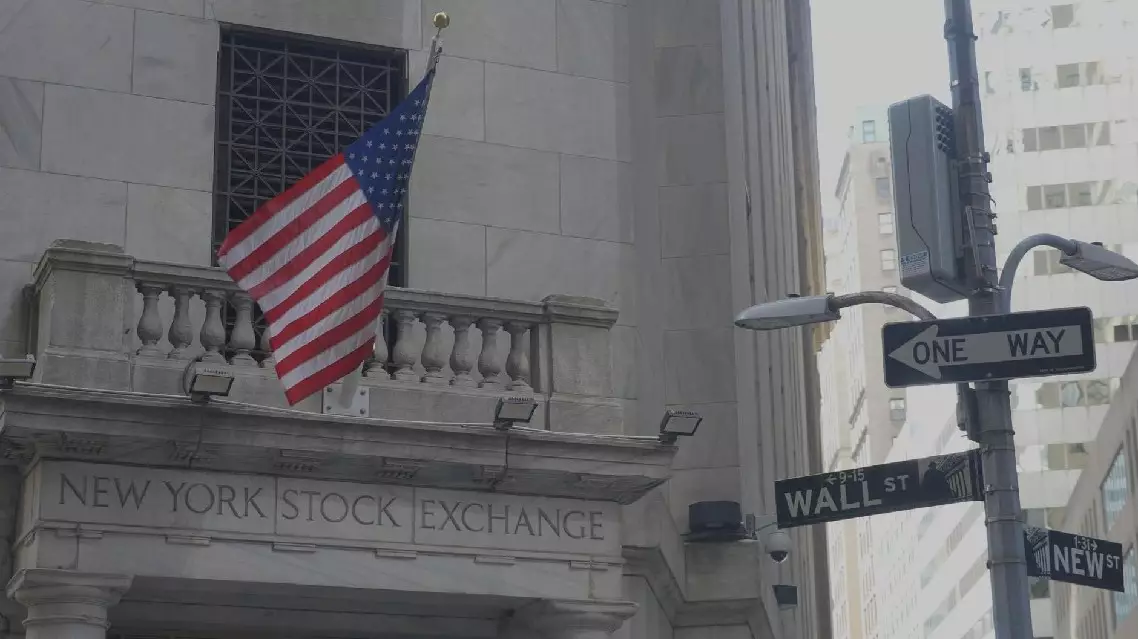U.S. stocks ended lower on Wednesday, while the U.S. dollar advanced in late trading on the same day.
The Dow Jones Industrial Average fell 1,123.03 points, or 2.58 percent, to 42,326.87. The S and P 500 sank 178.45 points, or 2.95 percent, to 5,872.16. The Nasdaq Composite Index shed 716.37 points, or 3.56 percent, to 19,392.69.
All of the 11 primary S and P 500 sectors ended in red, with consumer discretionary and real estate leading the laggards by losing 4.74 percent and 3.97 percent, respectively. Health posted the weakest decline, down 1.38 percent.
The dollar index, which measures the greenback against six major peers, gained 1.0 percent to 108.024 at 15:00 (2000 GMT).
In late New York trading, the euro lost to 1.0376 U.S. dollars from 1.0488 dollars in the previous session, and the British pound fell to 1.2593 dollars from 1.2711 U.S. dollars in the previous session.
The U.S. dollar bought 154.66 Japanese yen, higher than 153.34 Japanese yen of the previous session. The U.S. dollar added to 0.9003 Swiss francs from 0.8924 Swiss francs, and it advanced to 1.4417 Canadian dollars from 1.4310 Canadian dollars. The U.S. dollar was up to 11.1102 Swedish Kronor from 10.9670 Swedish Kronor.

US stocks close lower, US dollar ticks up

US stocks close lower, US dollar ticks up
The trade between the mainland and Macao has grown stronger in the past 25 years since Macao returned to China and the special administrative region was established, jumping 4.3 times from that in 1999 to reach 3.84 billion U.S. dollars in 2023, the Ministry of Commerce said on Thursday in a statement.
The ministry has been facilitating the economic exchanges and trade between the two sides to bolster the economic development and improve people's wellbeing in Macao.
In terms of the trade in goods, the mainland has implemented zero tariffs on all products originating in Macao to support the development of traditional industries in Macao.
The service trade has also seen substantial growth, as marked by the influx of mainland tourists to visit Macao. From 2004 to 2023, about 310 million mainland visitors traveled to Macao, according to the ministry.
The ministry also said that the mainland increased the duty-free allowance for travelers entering the mainland from Macao from 5,000 yuan (685.06 U.S. dollars) to 12,000 yuan in July, to boost tourism spending in Macao.
Investment between the two sides have also been robust. As of October, the mainland has attracted 23.93 billion U.S. dollars in direct investment from Macao while investing 14.19 billion U.S. dollars in Macao.
The bilateral economic and trade cooperation mechanism has been continuously improved, and the two-way opening level has been continuously upgraded, with the implementation of a series of policies, the ministry said.
Since 2003 when the mainland and Macao signed the Closer Economic Partnership Arrangement (CEPA) and its series of agreements, the two sides have fully liberalized trade in goods, basically liberalized trade in services, and provided comprehensive protection for investment. Economic and technological cooperation has expanded to broader areas as well.
The release of the Outline Development Plan for the Guangdong-Hong Kong-Macao Greater Bay Area and the overall development plan for the Guangdong-Macao in-depth cooperation zone in Hengqin have supported Macao to align with the national development strategy and better integrate into the overall development of the country.
Looking ahead, the ministry will continue to foster economic collaboration between the mainland and Macao and support Macao to appropriately diversify its economy and maintain a long-term prosperity and stability.

Trade ties between Macao, mainland get stronger over past 25 years











